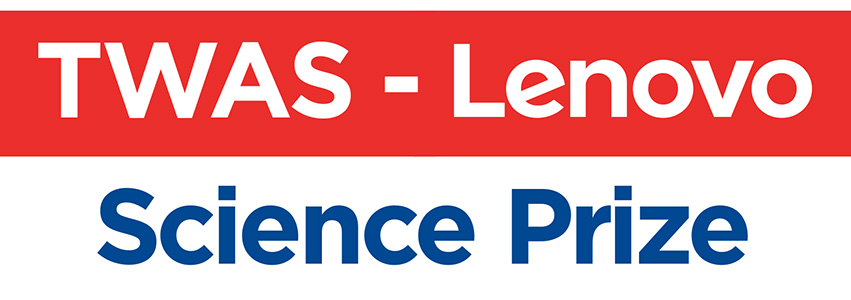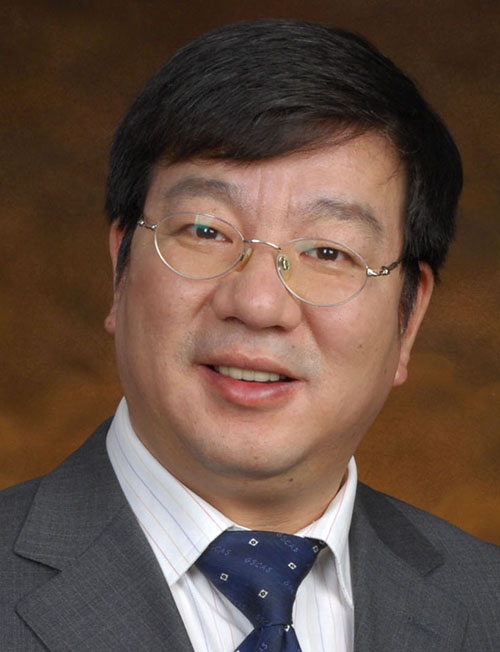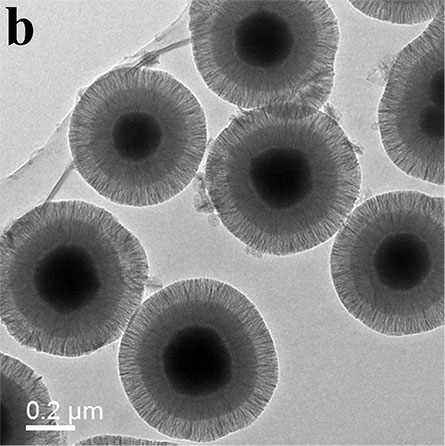![Zhao Dongyuan, right, works with a student in the lab. [Photo provided]](/sites/default/files/inline-images/web_working_in_lab_with_student.jpg) Kigali, Rwanda – Chinese materials scientist Zhao Dongyuan was named winner of the 2016 TWAS-Lenovo Science Prize today for his work discovering new materials that are now widely used. The award, one of the most prestigious honours given to scientists from the developing world, was announced in a special ceremony during the yearly General Meeting of The World Academy of Sciences (TWAS).
Kigali, Rwanda – Chinese materials scientist Zhao Dongyuan was named winner of the 2016 TWAS-Lenovo Science Prize today for his work discovering new materials that are now widely used. The award, one of the most prestigious honours given to scientists from the developing world, was announced in a special ceremony during the yearly General Meeting of The World Academy of Sciences (TWAS).
Zhao is a 2010 TWAS Fellow and a chemistry professor at Fudan University in Shanghai, China. His work focuses on mesoporous materials – structures that feature tiny, microscopic holes. Across two decades, his research and nano-scale applications have been used to clean water for drinking and agriculture, improve the capacity and efficiency of batteries, and deliver drugs with pinpoint precision in human bodies.
The annual prize includes an award of USD100,000 provided by the Chinese technology company Lenovo, the global leader in consumer, commercial, and enterprise technology that is the largest PC company in the world.
"Professor Zhao's body of research exhibits the highest values of scientific inquiry," said TWAS Executive Director Mohamed Hassan. "Materials science requires advanced knowledge of fundamental science. But Professor Zhao develops applications with a direct usefulness in people's lives – clean water, energy and health. Such innovative research is deserving of our Academy's highest honour."
 "Zhao is a renowned veteran chemist with over 30 years of research experience publishing over 600 scientific papers and winning over 50 research awards," said Lenovo Senior Vice President George He. "Especially in the synthesis and application of mesoporous materials, Zhao and his research team have made great breakthroughs. We are very honoured to present the TWAS-Lenovo Science Prize to him, and look forward to more of his impressive achievements."
"Zhao is a renowned veteran chemist with over 30 years of research experience publishing over 600 scientific papers and winning over 50 research awards," said Lenovo Senior Vice President George He. "Especially in the synthesis and application of mesoporous materials, Zhao and his research team have made great breakthroughs. We are very honoured to present the TWAS-Lenovo Science Prize to him, and look forward to more of his impressive achievements."
Zhao said he is gratified by the award, partly because it was an opportunity to highlight his field of research and the vast diversity of potential applications. “It is a great honour to get the award,” he said. “I would like to see more applications for developing countries that would economically benefit.”
A small material with a big impact
The nanometre scale – a nanometre is one-billionth the size of a meter – is so small that the mesoporous materials can very precisely manage the movement of chemicals on the molecular level. A water molecule, for example, is about a quarter of a nanometre wide, while a haemoglobin molecule is about five nanometres wide.
 Perhaps the simplest way to conceive of a mesoporous material is as a filter – a surface full of tiny holes that range from two to 50 nanometres wide. The holes let some substances through, such as clean water, and hold others substances back, such as pollutants. China and other countries had been using mesoporous materials as filters for many years, but Zhao, as a postdoctoral student in the United States in the late 1990s, began discovering new ways to create and use them.
Perhaps the simplest way to conceive of a mesoporous material is as a filter – a surface full of tiny holes that range from two to 50 nanometres wide. The holes let some substances through, such as clean water, and hold others substances back, such as pollutants. China and other countries had been using mesoporous materials as filters for many years, but Zhao, as a postdoctoral student in the United States in the late 1990s, began discovering new ways to create and use them.
Zhao and his colleagues experimented with the materials' shapes and attached them to other materials, taking into account their electromagnetic properties.
One use for this discovery has been improving the quality of batteries. When a surface is covered in molecule-sized holes, that increases its surface area by adding the surfaces along the insides of the holes themselves. Since batteries store energy on the surface area of materials that are good at managing electricity, a porous carbon material can store more energy than a non-porous material of the same size.
Carbon is highly efficient for holding electricity, and Zhao developed a mesoporous carbon material that is now used widely in supercapacitors in Chinese-made cars and streetlights. And the strategies he has used to combine porous carbon and other organic materials have been adopted by other researchers throughout the field.
Zhao also found a way to use mesoporous materials to clean up toxic water that is more precise than simple filtering. A category of toxins called microcystins, which can damage the liver and are suspected to increase the risk of cancer, commonly plague water supplies throughout the world. Unlike many other forms of pollution, microcystins are not caused by industry, but by common algal blooms.
People can't just filter the microcystins out. Tools are needed that can attack them where they exist in the water, and that's where Zhao's organic mesoporous materials come into play. They play a key role in another of his inventions – magnetic mesoporous microspheres.

These microspheres, tiny balls as little as 300 nanometres wide, function as microscopic couriers for chemicals that can neutralize the microcystins. An organic core made of iron and oxygen uses the magnetic force to hold a chemical in its pores. That core sits behind an equally porous shell of inorganic silica. The microspheres are then sent to a destination, such as polluted water, which disrupts the magnetic force and set the chemical loose through the shell.
The pores are an essential reason Zhao’s microspheres work. In the iron core, the pores provide an empty space for the chemical to be stored. While the pores in the silica shell provide passageways that the chemical can move through once they’re at the destination.
Zhao said this technique is currently used to produce high-quality water in various parts of the world, including Shanghai. The microspheres have also been adapted to deliver medicine – for example, injected into a human body to release a drug at the site of a cancerous tumour.
Thanks to this long history of innovations, Zhao is now one of the most cited and highly regarded researchers in his field, having published over 600 papers on mesoporous materials, many in elite journals such as Nature, Science and the Journal of the American Chemical Society. He has received an extraordinary number of citations, over 60,000 in all. He has also served as the thesis advisor to 80 PhD candidates at Fudan University in Shanghai and co-founded the Collaborative Innovation Center of Chemistry for Energy Materials, a major chemistry and engineering collaboration within China, in 2012. In 2009, he won the TWAS Prize in chemistry.
This is the fourth year of the TWAS-Lenovo Science Prize, the successor to the Ernesto Illy Trieste Science Prize that ran for eight years previously. During its first four-year cycle (2013-2016), the TWAS-Lenovo Prize has focused on recognizing outstanding work in the basic sciences, with the subject area changing each year: physics and astronomy in 2013; biological sciences in 2014; mathematics in 2015; and chemical sciences in 2016.
The prize will continue for four more years, honouring work in geology in 2017, engineering in 2018, agricultural science in 2019 and social science in 2020.
*****
About Lenovo
Lenovo (HKSE: 992) (ADR: LNVGY) is a US$45 billion global Fortune 500 company and a leader in providing innovative consumer, commercial, and enterprise technology. Its portfolio of high quality, secure products and services covers PCs (including the legendary Think and multimode YOGA brands), workstations, servers, storage, smart TVs and a family of mobile products like smartphones (including the Motorola brand), tablets and apps. Join Lenovo on LinkedIn, follow it on Facebook or Twitter (@Lenovo) or visit at www.lenovo.com.
Sean Treacy

